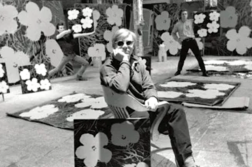HUMANITY HAS WITNESSED over the past thirty years two world-changing developments of epochal importance: the spread of the AIDS pandemic and the coming of the Internet. At its most severe, AIDS has changed the social, political, spiritual, and economic landscape of almost all of Africa, killing millions of people and destroying the lives of countless survivors, many of them children, while changing the demographics of whole societies. In about the same time frame, the Internet went from a localized curiosity to a worldwide, and world-shaking, phenomenon. A growing percentage of humanity now has access to the Internet and thus to an infinite amount of information on every imaginable topic. Communication among our species has never been easier than in virtual reality; distance and cultural barriers are increasingly irrelevant, and the possibilities for synergies—for the kinds of quantum leaps that human minds can make when they share ideas—has risen exponentially with the advent of the World Wide Web. (There’s also spam and viruses and the pernicious “virus” of capitalism that is turning this wonderful tool of exploration and investigation into a junkyard of billboards and ads for Viagra and opportunities to increase one’s penis size—but that’s another story.)






